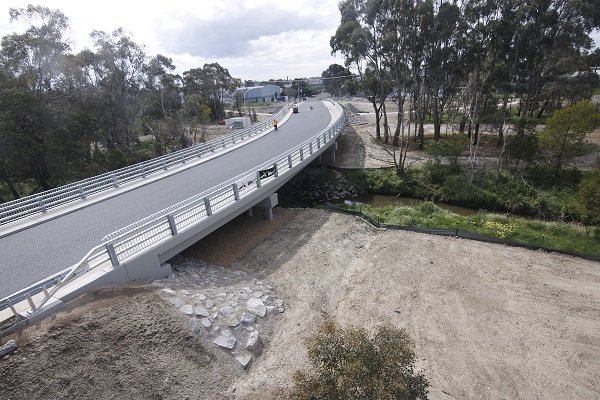Profiling as the Foundation of Pavement Performance

In the construction world, surface preparation is often overlooked. But for those who understand pavement performance, most long-term issues start, not with the asphalt or the paving process, but with the condition of the ground beneath. Whether it’s a new build or a rehabilitation project, how the surface is prepared has a direct influence on every layer that follows.
Good surface preparation sets up pavement quality, rideability, and durability. It’s particularly important in high-traffic routes, arterial roads, freight corridors, intersections, and bus lanes where performance needs to be beyond reproach.
Getting the ground correct
To the public, a road is a surface. To the engineer and contractor, it’s a series of layers, with each one contributing to the performance of the next. If subgrade or base layers are off by a fraction of an inch or compacted differently or outside tolerance, those faults flow through to the surface.
This can manifest as drainage issues, early rutting, surface cracking, or rideability problems. While some defects can be patched, if the underlying problems—movement, level changes, or material inconsistencies—are left unchecked, they will come back to haunt you.
These issues aren’t limited to new builds either. In road rehabilitation & stabilisation works, where older roads are being reconditioned to extend their lifespan, surface preparation becomes even more critical. Inconsistent base conditions or legacy misalignments can easily undermine even the best overlay or resurfacing effort if not addressed properly at the outset.
High traffic – High stakes
In heavy traffic areas, the road structure is subject to a whole range of complex loading scenarios. Freight corridors are subject to axle loading. Bus routes to high-frequency braking and lateral forces. Intersections are a combination of static weight and turning loads. This adds to the wear and tear, particularly where the base preparation is off.
Small deviations in level may not matter in smaller sites. But in major transport corridors, even small variances quickly become structural weaknesses. Uneven compaction leads to differential settlement. Inconsistent trimming leads to water traps. These can slip through if you’re not careful and undermine the performance of the surface layer.
That’s why grading, trimming, and base preparation need to be closely controlled. It’s not about compliance—it’s about risk mitigation. It’s about ensuring the layers perform how they’re supposed to and not wasting time and money on rework.
Tolerances and quality control
In high-traffic areas, tolerances are tight. In some cases, the specifications are for grading to within 10mm, for consistent compaction of the sublayers, and for verified moisture content before the pavement is laid.
These are based on real-world experience. Road authorities and asset owners know the cost of getting this wrong, both in terms of the cost of repair and the whole-of-life cost of that structure.
Technology helps deliver. Profilers, total stations, machine control, and GPS verification have helped make this work much easier. Road profiling services, in particular, play a critical role in restoring level and shape prior to resurfacing, especially in rehab projects where precision must be achieved within tight timeframes. But this needs to be paired with disciplined quality control.
Calibration, environmental control, and regular site checks remain important, particularly where ground conditions are variable or where works are subject to weather conditions.
Rideability – a visible result
Rideability is one of the easiest things to pick up on as a driver. Small bumps, small dips, or inconsistent transitions are all apparent. This not only impacts driver comfort, but it also increases vehicle wear and reduces the operating efficiency of heavy freight and public transport.
Many of these rideability issues can be traced back to poor base preparation or inconsistent workflow between the sublayers. Getting surface levels correct, particularly around ties, stops, or turn lanes, reduces the chance of defects. If the base layer is correctly prepared, the surface layer should be able to perform as designed.
Durability after handover
Durability is the acid test after construction is complete. From an asset management perspective, this means fewer repairs, less disruption, and improved performance over time.
Well-prepared ground improves load distribution, reduces water ingress, and minimises surface deformation. Over a 10–20 year period, well-prepared pavements have fewer failures and longer periods of performance. The economics are clear. Invest a little early, and you get lower life cycle costs and reduced disruption for the end user.
A pragmatic and informed approach
Even well-planned works have their constraints—time pressures, unexpected ground conditions, or legacy interfaces. Nevertheless, experienced contractors approach preparation not as a box-ticking exercise, but as a key part of delivering the job. It’s not about perfection—it’s about controlling the process, identifying problems early, and fixing them before they become a headache.
It’s not always what’s visible above ground that makes a high-performing pavement. But often the difference is between an asset that stands up and one that has to be taken out.



